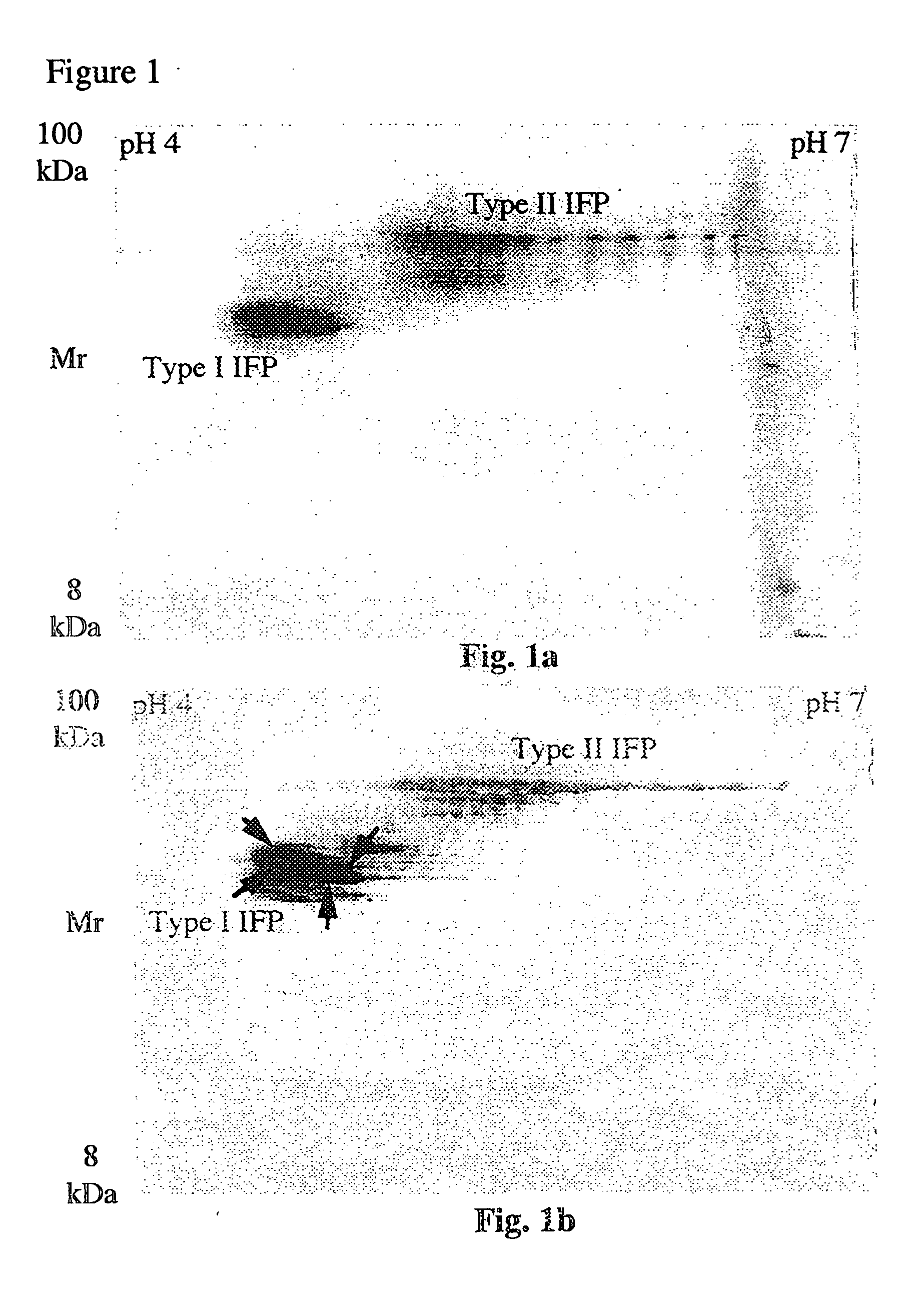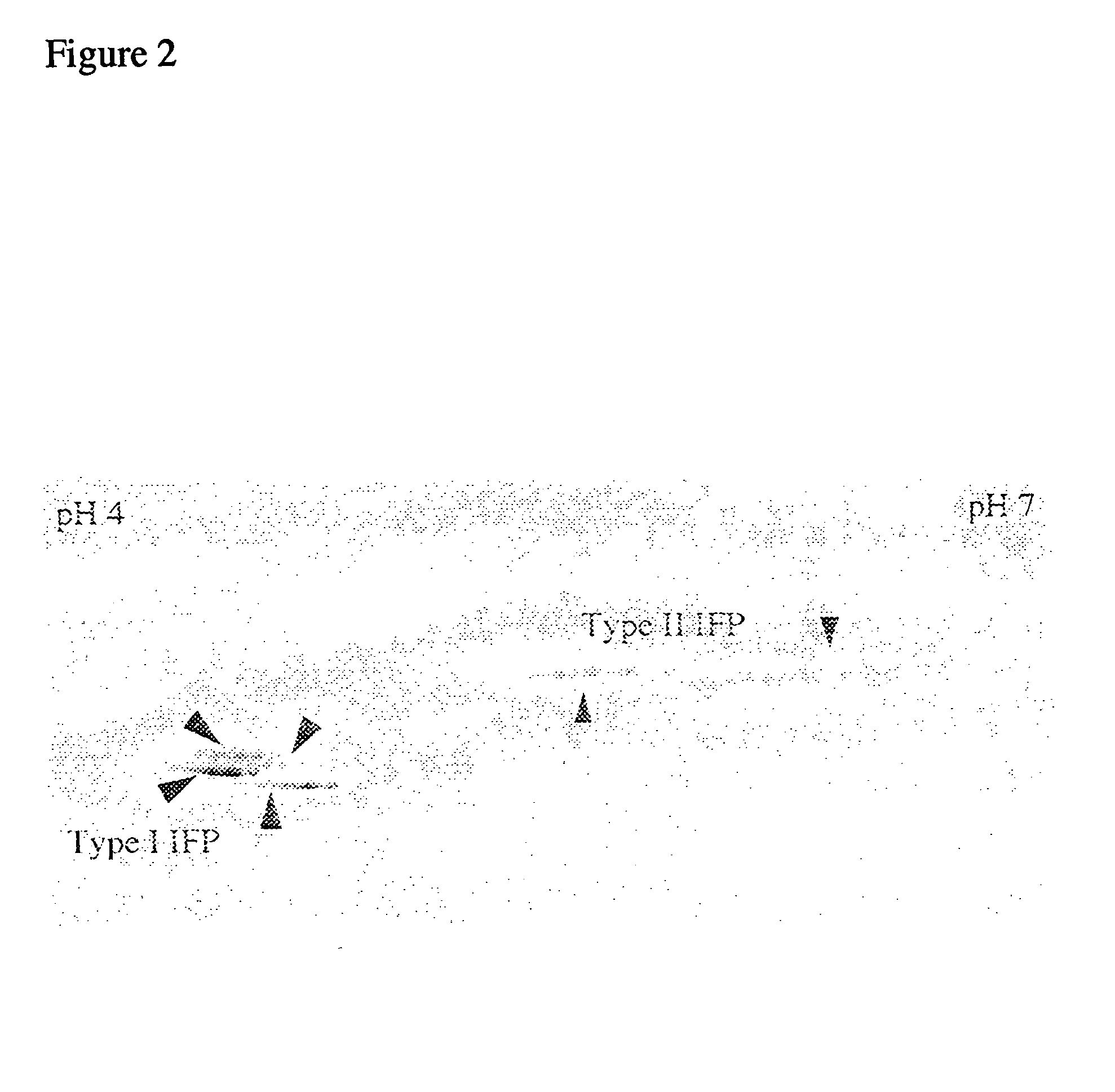Electrophoresis separation methods
a technology of electrophoresis and separation methods, applied in the direction of electrophoresis components, material analysis through electric/magnetic means, semi-permeable membranes, etc., can solve the problems of poor reproducibility, gradients are prone to disruption, and difficult to achieve pre-protein loads using conventional carriers, etc., to achieve visualisation of separated macromolecules.
- Summary
- Abstract
- Description
- Claims
- Application Information
AI Technical Summary
Benefits of technology
Problems solved by technology
Method used
Image
Examples
Embodiment Construction
[0042] To demonstrate the effectiveness of the present invention, DTT was replaced with TBP to increase the solubility of proteins during the IEF. In order to simplify the equilibration process the conventional two step equilibration presently used has been replaced with an optional one step protocol using TBP and acrylamide. DTT was replaced as the reducing agent for a variety of reasons. Disulphide bond breaking with thiol containing reagents such as DTT is achieved by an equilibrium displacement process using a large excess of free thiols. Because high concentrations of free thiols are required to shift the equilibrium in favour of breaking disulphide bonds, in an alkylation, the majority of the alkylating agent reacts with the thiol reducing agent. Thus, it can be difficult to obtain a molar excess of alkylating agent. In contrast to thiol reducing agents, the phosphine family of reducing agents bring about reduction by a stoichiometric process rather than an equilibrium displac...
PUM
| Property | Measurement | Unit |
|---|---|---|
| pH | aaaaa | aaaaa |
| pH | aaaaa | aaaaa |
| pH | aaaaa | aaaaa |
Abstract
Description
Claims
Application Information
 Login to View More
Login to View More - R&D
- Intellectual Property
- Life Sciences
- Materials
- Tech Scout
- Unparalleled Data Quality
- Higher Quality Content
- 60% Fewer Hallucinations
Browse by: Latest US Patents, China's latest patents, Technical Efficacy Thesaurus, Application Domain, Technology Topic, Popular Technical Reports.
© 2025 PatSnap. All rights reserved.Legal|Privacy policy|Modern Slavery Act Transparency Statement|Sitemap|About US| Contact US: help@patsnap.com



